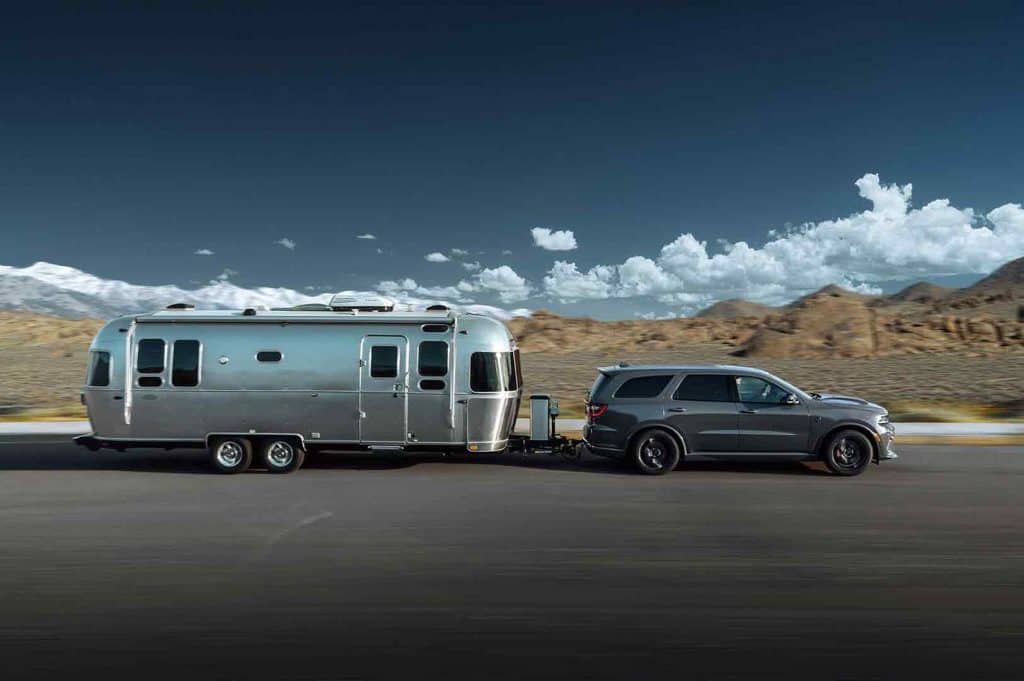A trailer is a vehicle without an engine that can carry goods. Trailers are popular with summer residents during the harvest, they are used when moving, building, and repairing. You can load it with bulky items that do not fit in the interior and trunk of a car and not worry that they will damage the plastic trim or seat upholstery. In addition, a trailer can be a whole camper that you can bring anywhere to live in. ATVs and motorboats are also carried on trailers. If you have one of the best SUVs for towing, you get an opportunity to transport almost everything you need in your vehicle at any time without outside help.
However, very few car drivers in the US take into account all difficulties related to installing a trailer and driving with it. Here are the most important facts each future trailer owner should consider.
Features of Driving an SUV with a Trailer
A vehicle with a trailer becomes less maneuverable. The hardest thing to get used to is how the trailer behaves when driving in reverse. Usually, when the steering wheel is turned to the right, the rear of the car goes to the left, but with a trailer, the opposite is true. You should turn the steering wheel where you want to direct the trailer. If you turn the steering wheel too far and continue driving, the trailer could fold over and damage the rear bumper.
When overtaking and changing lanes, a vehicle with a trailer requires more space. This must always be remembered so as not to cut off other drivers. When turning with a trailer, you should not cut corners, but on the contrary, take a turning radius larger than usual by about three feet. The trailer turns in a radius smaller than the wheels of the car. This is especially true at gas stations when the vehicle is too close to the column.
It is not recommended to suddenly accelerate and brake. Movements should be as smooth as possible. You do not need to brake when turning, as this can fold or overturn the trailer. Before turning, slow down, and after passing the middle, add a little gas. If the trailer sways, the driver will most likely want to slow down, but you should not do this: things can get worse, and the trailer will collapse. Therefore, you need to accelerate to level the trailer. Of course, if traffic conditions permit.
Fortunately, modern vehicles such as the Chevrolet Tahoe have an integrated trailer stabilization system. In the event of a buildup, the system independently activates the brake mechanisms of the trailer and, if necessary, limits the engine traction. All this gives you confidence in getting to the campsite without any problems. A used SUV with an integrated stabilization system is the best choice if you are going to tow regularly, but try to save money. Check a convenient car loan estimator to find the most appropriate option in Indianapolis.

Tow Bar: How to Choose and Install
To install a trailer, you need a tow bar – a special hook attached to the rear of the car frame. Officially, it is called a towing device, a hitch. A tow bar, unlike a trailer, is not a universal device: it must be selected for a specific car model.
The hitch may be stock from the factory. If not, you can buy the original one as an accessory. For some cars, you have to look for a non-original tow bar – before buying, make sure that it has a certificate of conformity. Sometimes, when installing a non-original tow hitch, you have to file the bumper.
It is convenient if there is an electrical kit with the tow bar: a socket and wiring. They are needed so that the brake lights and turn signals light up on the trailer – this is a prerequisite. But if there is no standard kit, you can purchase the electrical part separately. It is universal and is not related to a car or tow bar model. If you have an expensive car, it makes no sense to overpay for a kit that, according to legend, was made just for it. Look at the common and low-maintenance models.
Sometimes an additional matching unit is needed – a set of relays, without which the onboard network of a car with a new tow bar may not work correctly. Here are some trouble examples:
- turn signals flash too fast
- the onboard computer shows a tow bar error, which is why the car refuses to drive with a trailer;
- the car’s network is overloaded, and some fuse periodically blows, for example, the one responsible for the brake lights.
In some cases, it is enough to fasten the tow bar with connecting bolts to the standard holes on the rear spars. The bumper does not need to be removed or cut.
The hardest part is electrical. To connect the device, you need to remove the trunk trim and get access to the car’s wiring. It is best to trust a specialist who will measure the voltage and confirm if your vehicle needs a matching unit. If you are near Indianapolis, you can address the Indy Auto Man service center. The trained technicians will install all necessary equipment and put a mark in the service book.

